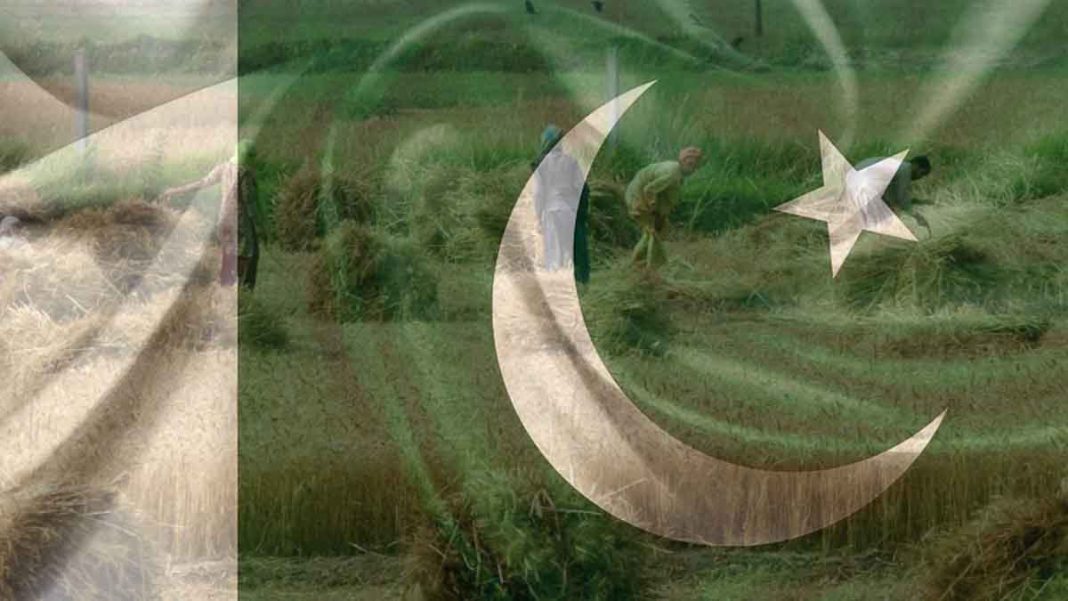The assumption that ‘Pakistan is an agricultural economy’ is largely acknowledged because the agriculture sector of Pakistan still employs 39 percent of the entire labour force and contributes a substantial 22 percent share to the national GDP. Even though more than 60% of the population is dependent on agriculture, either directly or indirectly, agriculture productivity is low in comparison to other global economies. Pakistan is one of the nations threatened by food insecurity, ranking 99th out of 121 on the Global Hunger Index 2022. Similarly, ‘Pakistan boasts one of the greatest irrigation network systems in Asia,’ is another often promoted yet unproven claim.
In contrast, according to the Food and Agriculture Organization (FAO), Pakistan is one of the world’s thirty-six water-stressed countries. As a result, these claims require a fair assessment and reconsideration considering existing data and ground reality, as well as a study of measures and the development of action plans to make these assertions true.
Read more: Pakistan won the 1992 World Cup in 2006: Nida Yasir
Understanding the matter better
According to the World Bank’s World Development Indicators, the value-added per worker in the agriculture sector of Pakistan is around US $2,634 per annum. When we compare our agricultural productivity with countries like China, Nigeria, Mongolia, Mexico, etc., they also have over US $5,000 value-added per worker per annum — almost double that of Pakistan. Even in South Asian economies, Maldives has the highest value-added per worker of US $11,848 in the region and Sri Lanka also has a productivity level of US $3,248.
The actual problem is not that our agricultural productivity is lower than that of advanced and middle-income countries of the world — the real problem is that our agricultural sector is no longer transforming over time. The historical trend of value-added per worker of the agriculture sector shows stagnation. For instance, in 1991 our per-worker agricultural productivity was US $2,137 and still hovered around US $2,634 in 2019. Although India and Bangladesh’s productivity levels currently sit at US $2,075 and $1,284, respectively — they managed to hit this level from a starting value of US $864 for India and US $505 for Bangladesh in 1991.
If current trends persist, they will comfortably outpace Pakistan and will be in a far better position of dealing with food insecurity than Pakistan. The key takeaway from these figures is that India and Bangladesh’s growth rate of agricultural productivity remained at 140 percent and 154 percent respectively during the 1991-2019 period, whereas that of Pakistan stood at only 23 percent. Pakistan was unable to transform and reform its agricultural sector in the past three decades.
Other than the low per-worker productivity and per-hectare crop yields, Pakistan is also facing the problem of mismanagement and poor governance of water resources. Despite having one of the largest irrigation networks in the world, according to the FAO, Pakistan is included among thirty-six water-stressed countries of the globe as its water withdrawal rate is 74.4 percent of the total renewable water resources and is on the brink of facing absolute water scarcity by 2040. In addition to poor water management and low water productivity, efficiency is also a major challenge in Pakistan.
According to data presented at a conference titled ‘Water Productivity in Agriculture – the role of Technology and Private Sector’, ‘Per unit productivity of water in agriculture is very low in Pakistan. Pakistan produces 0.13 kg of cereal using a cubic metre of water (m³) whereas it is 1.56 kg/m³ in the USA, 0.82 kg/m³ in China, and 0.39 kg/m³ in India.
In the case of rice, Pakistan has the fourth highest rate of water use in the world
The data shows that despite having one of the largest irrigated land areas comprised of fertile plains irrigated by the mighty Indus — one of the largest rivers of the world — Pakistan’s standing in terms of food security is considerably low. Even though Pakistan is one of the largest producers of wheat and sometimes produces it in surplus, according to the National Nutrition Survey 2018, 36.9 percent of its households are ‘food insecure’. In addition, 36.7 percent of Pakistani children under the age of five are affected by stunted growth as compared to the global average of 21.3 percent and the prevalence of anaemia among women (15-49 years) is around 52.1 percent against the global average of 32.8 percent.
Read more: Pakistan to move towards coal-based power generation
Introducing structural transformation for enhancing crop yield and value-added per worker in agriculture is critical at this juncture. The long-term agricultural transformation for better value-added workers and greater value of crops per drop of water requires structural changes. Pakistan needs to define its agricultural zone based on the agro-climatic conditions and the provision of subsidies must be linked with prioritised crops for each zone.
Instead of doling out subsidies across the board in the shape of support prices for certain so-called cash crops and squandering resources by diverting them towards subsidised crops even if they are not suitable in certain agro-climatic zones, there is a need for specialised packages of subsidies, provision of quality input, and other support services. Another crucial step could be crop diversification from traditional major crops to high-value crops — fruits and vegetables. Furthermore, for better water efficiency and productivity, modern water conservation practices like drip irrigation, water sprinklers, climate-resistant crop varieties, and rainwater collection and storage need to be adopted.
Dr. Ghulam Mohey-ud-din is Director of Economic Affairs at the Centre for Aerospace & Security Studies (CASS), Lahore, Pakistan. He can be reached at casslhr.direcon@gmail.com. The views expressed in the article are the author’s own and do not necessarily reflect the editorial policy of Global Village Space.














